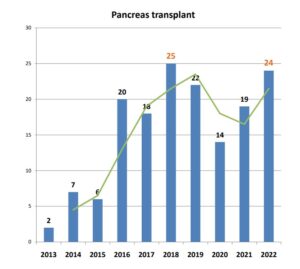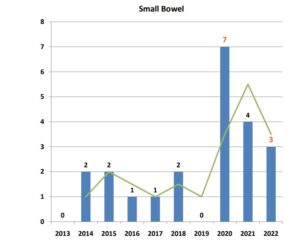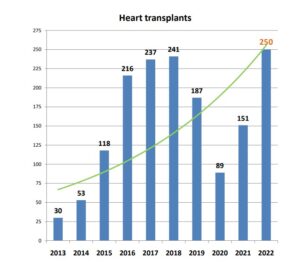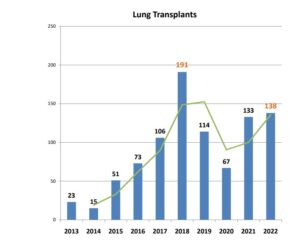When we think of organ donations, heart, kidneys, and liver come to the mind. But what about the lesser-known organs that are just as crucial?
Published Aug 13, 2024 | 1:00 PM ⚊ Updated Aug 13, 2024 | 2:41 PM

When we think of organ donations, the heart, kidneys, and liver often come to mind. But what about the lesser-known organs that are just as crucial? This article explores under-discussed donations like intestines, pancreas, and corneas
Think organ donation, and heart, kidney, and liver come naturally to one’s mind.
However, other less-talked-about organs and tissues are equally vital for those in need. These “hidden heroes” play a critical role in saving lives and improving the quality of life for patients with severe conditions.
Speaking to South First Dr Nagesh R, Medical Administration and Head of the Department of Anesthesia at Kauvery Hospitals in Bengaluru said the donation of lesser-known organs such as pancreas, intestines, skin, and hands plays a critical role in saving and transforming lives.
“While organs like kidneys and livers are more commonly donated and transplanted, the demand for these lesser-known organs is equally significant, particularly for patients with complex medical needs,” Dr Nagesh explained.
Dr Suresh Raghavaiah, Senior Consultant, multi-organ transplant surgery at Gleneagles BGS Hospital, Kengeri in Bengaluru told South First that along with some organs like the pancreas, small intestines, and limb transplants, there have also been instances of uterine and face transplants. “But they rare,” he said.
For severe diabetes patients, a pancreas transplant can save them. The procedure is often considered when diabetes becomes life-threatening and other treatments are no longer effective.

“Pancreas transplants are not well-known, but they are crucial for certain diabetic patients,” Dr Nagesh explained.
In India, less than 50 transplants are done annually, he added.
Dr Raghavaiah said pancreas transplants are performed for even those with kidney failure, eye damage, nerve damage, etc.
“At Gleneagles, our team has done the maximum number of pancreas in the state. A successful pancreas transplant not only cures the diabetes but also prevents the progression of its long-term complications,” he said.
The demand for pancreas transplants is increasing, but like other lesser-known organs, the availability is limited.
In India, the number of pancreas transplants is growing, but the waiting list remains long due to the lack of awareness and donors.
Intestinal transplants are a rare but essential procedure for patients suffering from conditions like short bowel syndrome or severe Crohn’s disease.

Many people don’t realise that intestines can be transplanted, doctors said.
“For patients with short bowel syndrome, an intestinal transplant can mean the difference between life and death. Intestine transplants are crucial for those with short bowel syndrome. Currently, we do less than 75 per year in the country,” Dr Nagesh explained.
The rarity of the procedure, combined with the complexity of the transplant, widens the demand and availability gap.
Dr Raghavaiah said small bowel transplants are done for patients who lost a significant length of their intestine or due to twisting the intestine (torsion).
“This will affect their ability to absorb nutrients and hence cause malnourishment. A small bowel transplant will help in treating this condition and avoid the growth retardation in children and other complications of total parenteral nutrition,” he explained.
The cornea, the transparent front part of the eye, is essential for vision.
Corneal transplants are often required for patients with severe eye conditions such as keratoconus or corneal scarring.
“Corneal transplants are relatively common, but they don’t get the same attention as other organ donations,” Dr Veerabhadraiah, Ophthalmologist at Bangalore Nethralaya, said.
“For those with severe corneal damage, a transplant can restore vision and dramatically improve their quality of life,” he added.
India has one of the highest rates of corneal blindness in the world, with nearly 120,000 people requiring corneal transplants each year. However, the availability of donated corneas is significantly lower than the demand.
While heart transplants are well-known, heart valve donations are less discussed.

Heart valves are often required for patients with conditions like valvular heart disease or congenital heart defects. Heart valve transplants can be life-saving, especially for young patients with congenital defects. These procedures are less talked about but essential for many patients.
The demand for heart valves is increasing, particularly in India, where rheumatic heart disease remains a significant cause of valve damage. However, the availability of donated heart valves remains limited.
Lung transplants, though becoming more common, are still less discussed compared to other organs.
They are critical for patients with conditions like cystic fibrosis, chronic obstructive pulmonary disease (COPD), or pulmonary fibrosis.

“Lung transplants are one of the most challenging and life-saving procedures we perform,” Dr C Nagaraj of the Rajiv Gandhi Institute of Chest Diseases, said. “For patients with end-stage lung disease, a transplant is often their only hope.”
The need for lung transplants is growing, especially with the rising incidence of severe respiratory diseases. However, the complexity of the procedure and the shortage of donor lungs make the waiting list long.
Dr Ravi Mehta, renowned pulmonologist and founder of VAAYU chest and sleep centre, calling lung transplants one of the rare procedures, said, “It is a very important organ, as the lungs are impacted by the environment every day with pollution, allergens, environmental irritants, and infections.”
Speaking with South First, he said, “Assaults on the lungs are much more common now. As we live longer and face these particular injuries, more end-stage lung diseases, and lung failures have become more prevalent.”
Stating that the process has been more prominent in the last seven to eight years, Dr Ravi said, “For people under 65, and sometimes up to 70 years, lung transplant acts as the last option, after exhausting all other options.”
Further calling it a much more complicated procedure than kidney, liver, or even heart transplants, he said, “The surgeons who perform this are only in double digits in India.”
Explaining why it is complicated, Dr Ravi Mehta said, “It requires not only blood group matching but also many immune responses must be matched. Last but not least, the size of the lung also should match. One can’t place the lung of a six-foot person in a five-foot person.”
He added, “From the organ donor’s side also, due to the fragile nature of the lung and the necessity to transport it quickly, the huge process of listing of donors, and coordinating surgeon availability, it has become a rare occurrence.”
Speaking of the way forward, Dr Mehta said, apart from the economic aspect, the process requires more training and more tedious work.
Dr Raghavaiah explained that along with organ donation, a deceased donor can also be a source of tissues like skin and bones which are generally stored in skin banks.
These tissues are used to treat burn patients where a skin graft prevents infections which is the main cause of death in severe burns cases.
Skin grafts are crucial for burn victims and those with severe skin disorders, yet skin donation remains a lesser-known aspect of organ donation.
“Skin grafts are vital for the survival and recovery of burn patients,” Dr Smitha S Segu, Professor, Head of Unit, Department of Plastic Surgery at Victoria Hospital’s Skin Bank had told South First earlier.
“Without donated skin, many patients would not survive their injuries,” she said.
In India, the demand for skin grafts is high due to the prevalence of severe burns, particularly in rural areas. However, skin donation is not as prominent in public discourse, leading to a shortage of available grafts, Dr Segu added.
Bone marrow is the soft and spongy liquid tissue in the center of some bones. Cleveland Clinic explained that bone marrow daily produces more than 200 billion new blood cells, including red blood cells, white blood cells, and platelets.
Doctors explained that donation of bone marrow can help people with blood disorders like aplastic anemia or blood cancer.
Dr Nitin Yashas, Oncologist at Manipal Hospital said unlike a solid organ donation, in bone marrow or a stem cell transplant the donor doesn’t lose anything.
“It’s almost like a blood donation. India needs to expand its donor registry to help people find a match when siblings or parents are not a match,” he added.
Doctors opined that scarcity of donors for these organs often results in prolonged waiting periods, adding to the already challenging circumstances faced by patients.
The wait times for these organs can be much longer due to lower donation rates and a lack of awareness about the need for these specific transplants.
“Increasing public awareness about the importance of donating these organs is essential. By doing so, we can reduce waiting periods, offer new hope to patients, and improve overall outcomes in transplant medicine. Every organ donation has the potential to make a profound impact, regardless of how commonly it is discussed,” Dr Nagesh added.
(Edited by Majnu Babu).
(South First is now on WhatsApp and Telegram)
